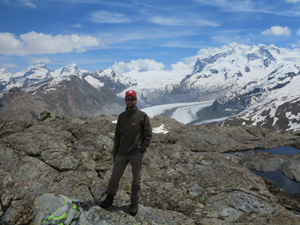A coupled model for intragranular deformation and chemical diffusion
- Earth and Planetary Science Letters474, p. 387-396, https://doi.org/10.1016/j.epsl.2017.07.005
Abstract
A coupled model for chemical diffusion and mechanical deformation is developed in analogy to the studies of poroelasticity and thermoelasticity. Nondimensionalization of the governing equations yields a controlling dimensionless parameter, the Deborah number, given by the ratio of the characteristic time for pressure relaxation and concentration homogenization. Using the Deborah number two types of plausible chemical zonation are distinguished, i.e. diffusion controlled, and mechanically controlled. The transition between these two types of chemical zonation is determined at the conditions where the Deborah number equals one.
We apply our model to a chemically zoned plagioclase rim in a spherical coordinate frame assuming homogeneous initial pressure. Using thermodynamic data, an experimentally derived diffusion coefficient and a viscous flow law for plagioclase, our numerical simulations show that up to ?0.6 GPa grain-scale pressure variation is generated during the diffusion-deformation process. Due to the mechanical-chemical coupling, the pressure variations maintain the chemical zonation longer than predicted by the classical diffusion model. The fully coupled mechanical-chemical model provides an alternative explanation for the preservation of chemically zoned minerals, and may contribute to a better understanding of metamorphic processes in the deep Earth interior.
